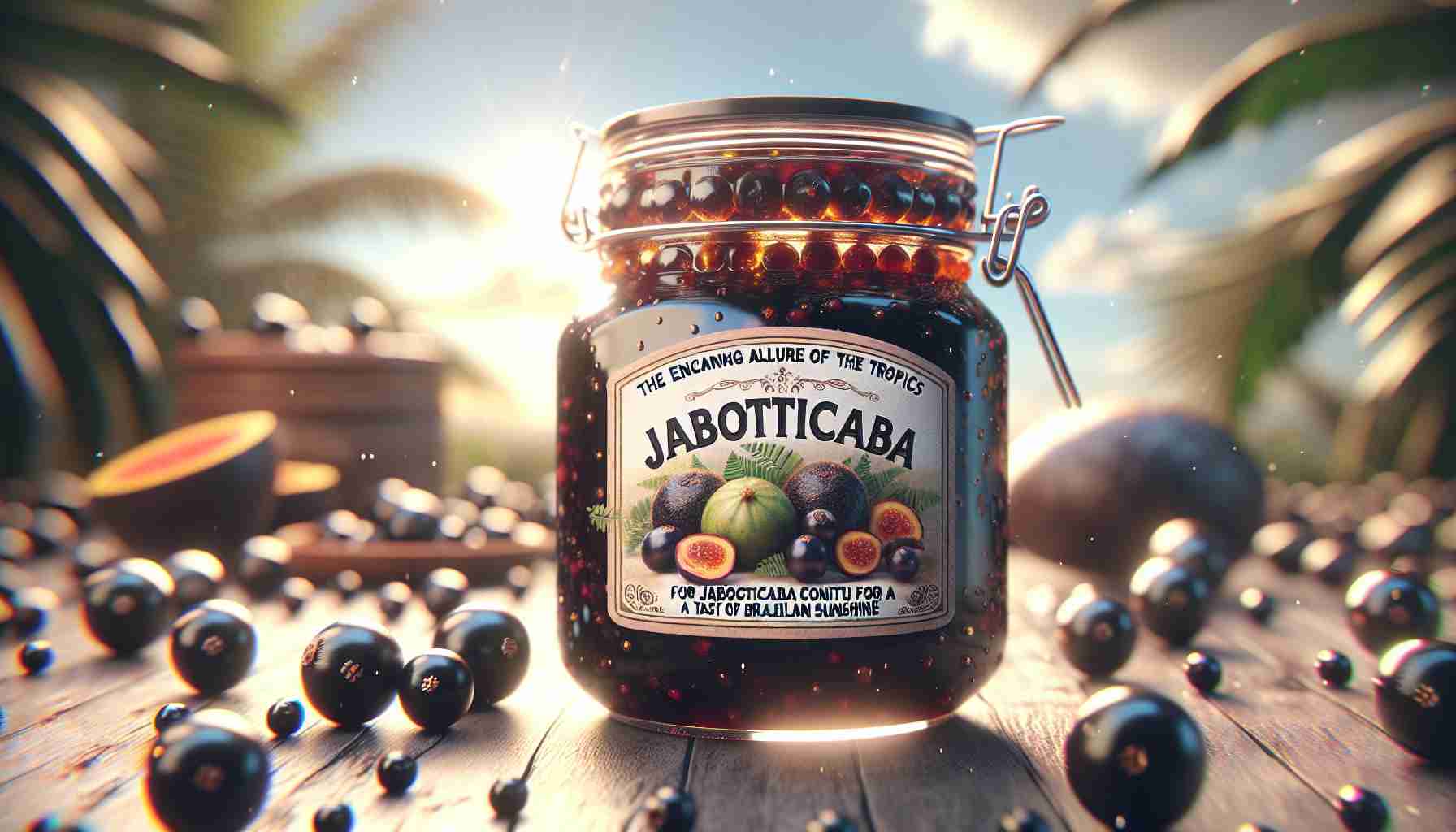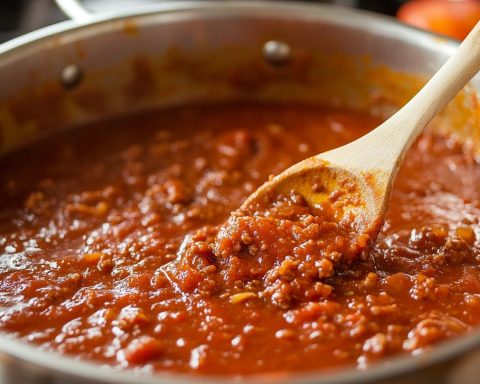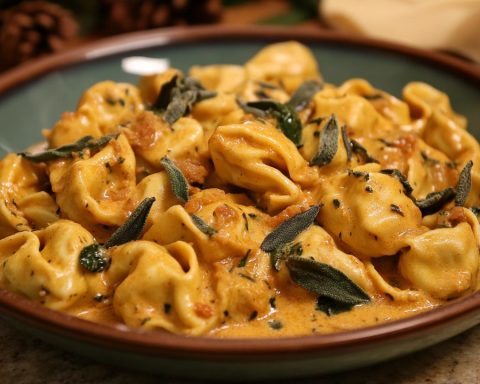Step into the sun-drenched groves of Brazil with every spoonful of this remarkable jaboticaba confiture. A treasure from the lush, fertile landscapes of South America, this vibrant purple gem captures the essence of tropical indulgence with its sweet, tart, and fruity nuances. Harvested from the jaboticaba tree, whose berries mystically grow directly on the trunk, this unique fruit boasts a grape-like flavor mingled with the essence of plums and cherries. Perfectly suited for a leisurely Sunday brunch, a quick weekday breakfast, or an elegant dinner party as a cheese pairing, this confiture adds a splash of color and a burst of flavor to any table.
Ingredients:
– 1 kg jaboticaba fruits, fresh and ripe
– 600 g granulated sugar
– 1 lemon, juiced
– 1 cup water
– 1 cinnamon stick (optional, for an aromatic touch)
Directions:
1. Preparation of the Jaboticaba: Start by washing the jaboticabas thoroughly to remove any dust or debris. Carefully remove any stems. The fruit’s skin should be intact as it houses the precious pectin crucial for thickening the jam.
2. Extracting the Juice: Place the jaboticabas in a large pot and pour in the water. Bring to a gentle boil over medium heat, then cover and simmer for about 20 minutes. During this process, occasionally stir and gently press the fruits using a wooden spoon to release the juice and pectin-rich pulp.
3. Straining: Once the fruits have softened and generously released their juices, pour the mixture through a fine sieve or cheesecloth into a bowl, pressing firmly to extract as much liquid as possible. Discard the solids left behind.
4. Creating the Confiture: Return the extracted juice to the pot. Stir in the sugar, lemon juice, and slip in the cinnamon stick if using. Heat over a medium flame, stirring until the sugar dissolves completely.
5. Achieving the Perfect Consistency: Increase the heat and bring the mixture to a rapid boil. Allow it to boil vigorously for about 20-30 minutes. The jam is ready when it reaches a “setting point,” which can be checked using the wrinkle test: place a small teaspoon of confiture on a chilled plate and tilt the plate after a minute. If the confiture wrinkles, it’s ready.
6. Storage: Once the desired consistency is achieved, remove the cinnamon stick and pour the hot confiture into sterilized jars. Seal tightly while still hot and let them cool to room temperature.
Cooking Tip: Stir vigilantly while boiling to prevent the jam from sticking to the pot, burning, or overflowing.
Serving Suggestions: Delight in your jaboticaba confiture spread over warm toast, swirled into creamy yogurt, or dolloped beside a selection of cheeses like camembert or a sharp cheddar.
Pairing Ideas: A sparkling white wine or a gentle cup of green tea complements the jam’s sweet-tart profile beautifully, enhancing the experience of the fruit’s tropical allure.
This jaboticaba confiture, with its glossy, jewel-like appearance and sophisticated flavor, offers an invitation to explore the rich and diverse gastronomy of Brazil. Each jar encapsulates not just a culinary delight but a cultural adventure, destined to captivate anyone who tastes it.
Unveiling Jaboticaba: The Miraculous Tree of Brazil’s Culinary Secrets
The jaboticaba tree, native to Brazil, offers more than just its jewel-like fruits. Beyond its sweet-tart berries and the delightful confiture they make, the tree has sparked intrigue and debates owing to its unique botanical behavior and potential health benefits.
Why Do Fruits Grow on the Trunk? Unlike most trees, jaboticaba fruits sprout directly from the trunk, a phenomenon known as cauliflory. This adaptation is theorized to aid seed dispersal by attracting ground-dwelling animals, a trait that has fascinated scientists.
Can Jaboticaba Be a Superfood? With its rich antioxidant content, jaboticaba is hailed by some as a potential superfood. The fruits are packed with vitamin C, iron, and valuable phytonutrients, thought to promote heart health and combat oxidative stress. Yet, more research is needed to substantiate these claims.
Are There Controversies Involving Its Cultivation? The slow-growing nature of the jaboticaba tree presents a hurdle for commercial farming, limiting its availability in global markets. This rarity sometimes drives its price upwards, sparking debates over fair trade and accessibility for local communities.
Unique Culinary Applications Beyond confiture, jaboticaba can also be used to craft wines, liqueurs, and even savory dishes. Its versatile profile lends itself to experimentation in the culinary world, offering a fresh twist on traditional recipes.
Thirsty for more Brazilian gastronomy? Discover exotic recipes and rich cultural tales at Brazil.org. Dive into the world of cauliflorous wonders and learn how nature’s eccentricities become culinary treasures.








